Important Time Nears for Crape Myrtles
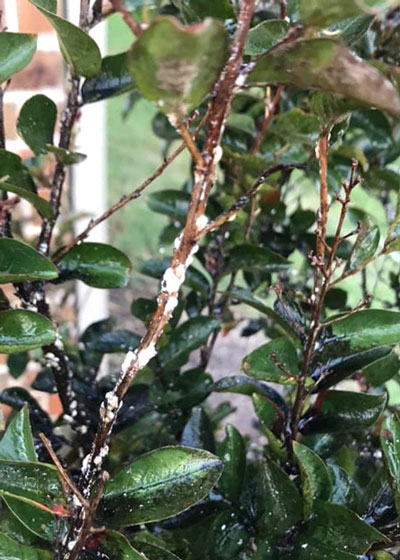
We didn’t even know what had hit us when the first samples of this obnoxious pest were brought into a Richardson nursery in 2004. It was obviously some kind of scale, but no one had ever seen it before. At least, no one in the U.S.
Dr. Mike Merchant, now retired as an urban entomologist with the Texas AgriLife Extension Service of Texas A&M was our first contact. He immediately sent samples to all the people who specialize in scale insects, notably the University of Florida and the Smithsonian Institute. It seems that scales can be especially difficult to identify.
That was 2004. Then came a very wet spring of 2007 and the pest went crazy all over the Dallas/Collin County side of the Metroplex (but nowhere else). It was piling up on crape myrtles because, as yet there seemed to be no natural predators.
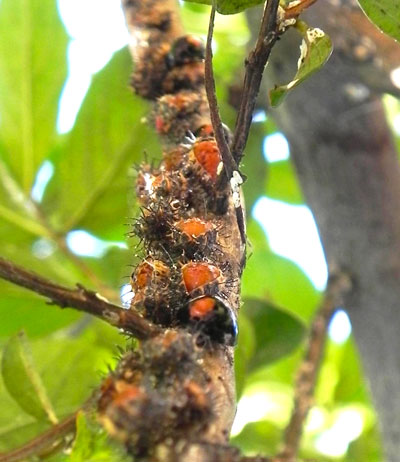
Later that summer Mike observed a special ladybug, one with black wings and one orange-red spot on each wing. Called by the name of the “twice-stabbed” ladybug, he observed it gobbling up scale insects like candy. Entire populations were being cleaned up.
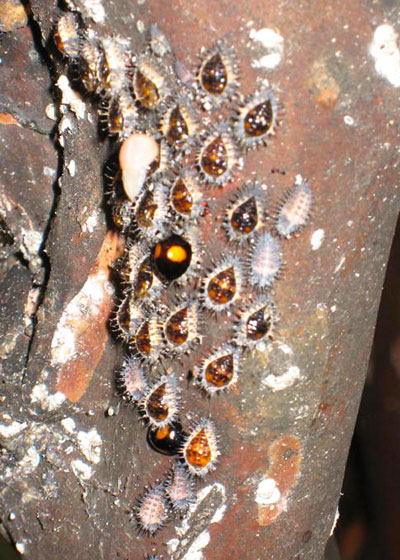
Tests were conducted in an attempt to find a dependable control. Sprays using common garden insecticides didn’t do very well, nor did dormant oil sprays applied over the winter.
It was determined that a soil drench of the systemic insecticide Imidacloprid gave the best prevention and that it needed to be applied by mid-May. All of which is to say, your time to treat is here now. Do not delay.
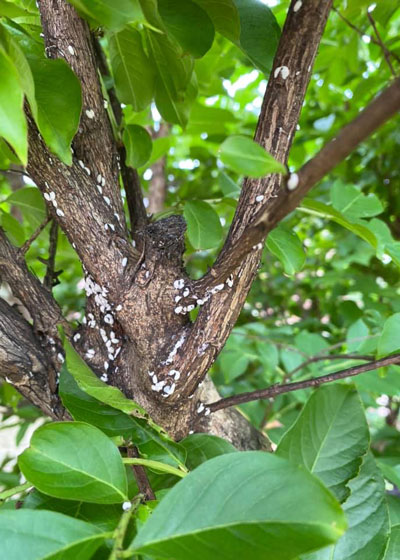
A few facts in summary…
• Crape myrtle bark scale Acanthococcus lagerstroemiae
• Native to China, first seen in the U.S. in 2004 in Richardson, Texas.
• Resembles white mealybugs as it clusters on stems and twigs.
• “Bleeds” pink when mashed.
• Sucks sap from stems.
• Rarely does measurable damage to its host plants, but disfigures them badly until leaves drop.
• Scales exude sticky honeydew that coats stems and leaves below.
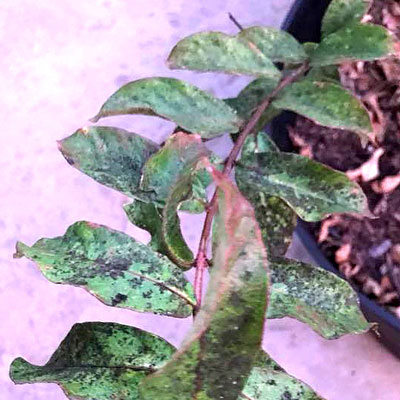
• To prevent the scales apply a drench of Imidacloprid around the drip line in late April or first 10 days of May. Soak it into the root zone.
• If you see the black twice-stabbed ladybugs on stems, allow them a week or two to build up their populations, then press on scale patches to see if they have been eaten up by the ladybugs.
• If sooty mold develops on trunks you can wash it (and scale) off with a bucket of warm, soapy water and two large, soft sponges.
This pest need not scare you off planting crape myrtles. They remain the outstanding summer-flowering shrub and small tree for the South. Odds are that this pest will even out as time passes, but for now, you may need to take a little precaution to avoid this unsightly invader.
